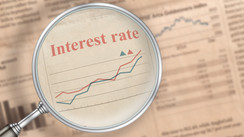Overview of Canadian Retail Market Trend
In a somewhat disappointing turn, Canada's retail sales fell slightly, decreasing by 0.1% to hit CA$66.08 billion ($48.16 billion) in August. This represents the first decline seen in retail sales over the last five months, as reported by Statistics Canada. Regardless of this dip, retail sales noted a 1.6% increase when comparing the figures from the same month last year. Initial data also suggests stable retail sales in September, with no significant shifts.
Economic Factors Affecting Canadian Retail
Canada's economic performance has been somewhat lackluster, with high inflation and soaring interest rates causing a dent in demand. Canada's central bank, the Bank of Canada, has decided to keep the policy rate at a high point of 5%, which hasn't been seen in 22 years, following multiple increases. A recent consumer survey unveiled that these rates have prompted households to re-evaluate their major purchasing plans that would require loans.
Living Costs and Their Impact on Consumers
While the job market sentiment remains positive, Canadians are increasingly concerned about the high cost of living. Auto dealers and parts dealers experienced a decline in sales for a second month in a row. However, this dip was balanced by rising sales in gas stations and fuel vendors as a result of increased fuel prices.
Strike Actions and Retail Sales Downturn
A strike among port workers also contributed to a subdued retail sales performance in August. Retail sales core data, which excludes gas stations and auto and parts dealers, reported a 0.3% dip. Moreover, sales of food and beverages, sporting goods, books, and miscellaneous retail items also noted a decline.
Stable GDP and Manufacturing Increase
Meanwhile, Canada's industry-level GDP remained consistent in July, with early estimates presenting a modest increase of 0.1% in August. This was primarily attributed to increased manufacturing sales which were driven by higher prices.





